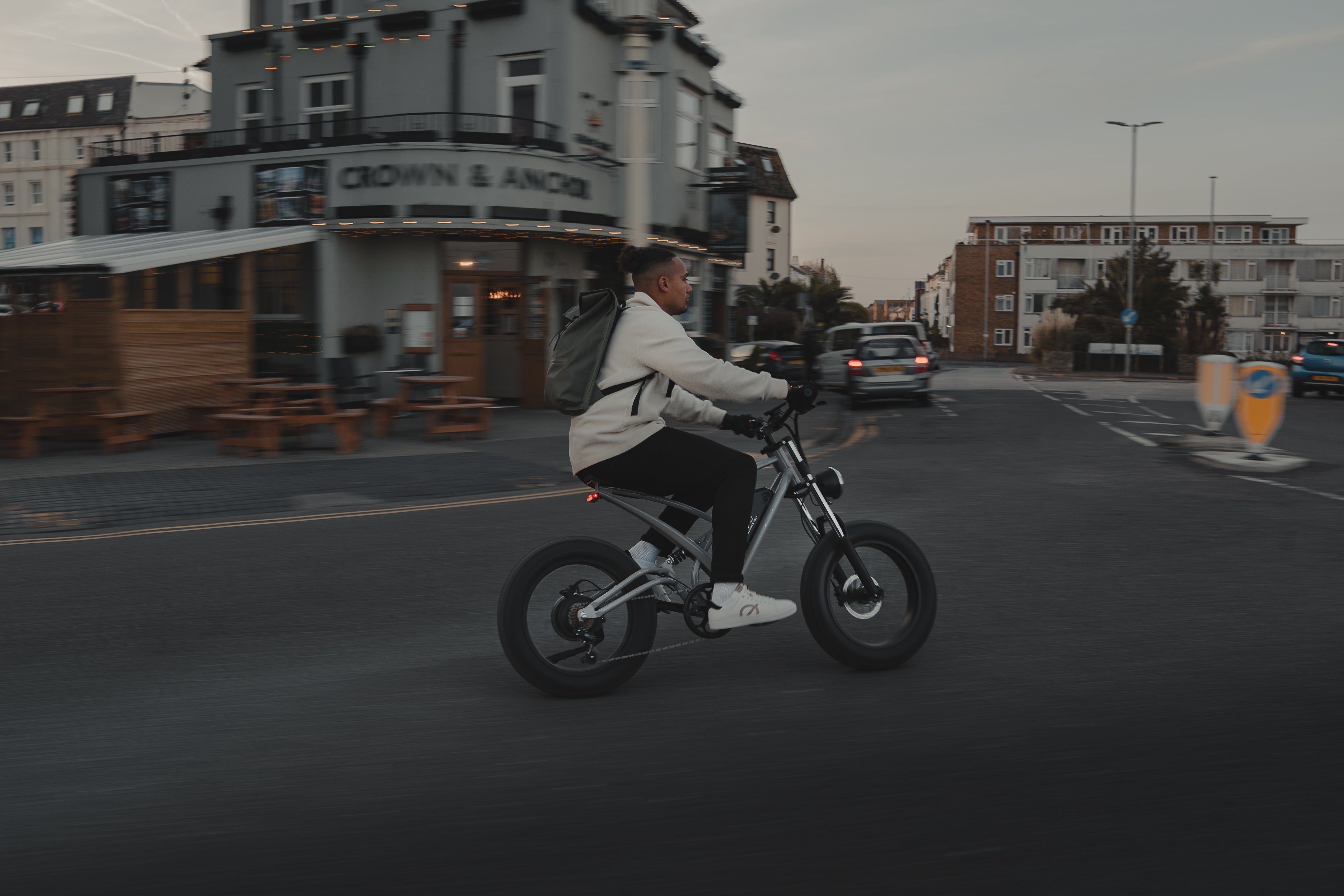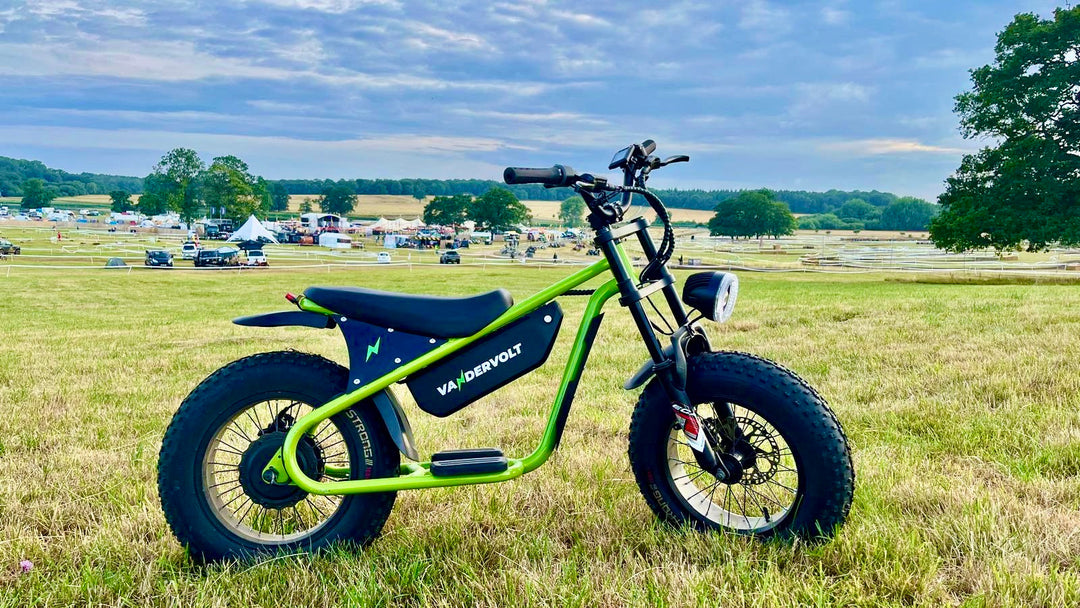Electric bikes, commonly known as e-bikes, have gained significant popularity in recent years due to their versatility, eco-friendly nature and ability to provide efficient transportation. One key aspect that people often consider when deciding to purchase an electric bike is its speed. How fast can electric bikes go? Is there a speed limit? What determines the overall speed of the bike? This blog will take a deeper look into electric bikes and everything you need to know about their speed and what influences the speed.
Factors influencing speed
The various factors that come into play when determining how fast an electric bike can go are its motor power, battery capacity, weight of the rider and bike, terrain and legal regulations. The Scrambler, VanderVolt’s exclusive items, are two different bikes with two different batteries and motors that allow them to perform different functions. The Scrambler VV750 can hit speeds of up to 27mph which would classify it as a non electrically assisted pedal cycle subjecting it to different laws and regulations than an EAPC.
Legal regulations are subject to change depending on the rider’s geographical location as different countries have different rules and laws surrounding e-bikes.
Electric bikes typically come equipped with electric motors that provide the rider with pedal-assist or fully electric power, allowing them to reach higher speeds with less effort when compared to traditional non-electric bikes.
Besides the motor and battery, another factor that can affect the speed of an electric bike is the weight of the rider. This will affect the overall top speed that the rider can hit while on their bike. Heavier loads may require more power from the motor, potentially reducing the overall speed.
The terrain and road conditions are other factors that can affect an e-bike’s speed. Uphill climbs and rough terrains may limit the speed, while flat and smooth surfaces can allow for higher speeds.
Maximum speed
The maximum speed of an electric bike is usually limited by law to ensure rider safety and to comply with local regulations. In many countries, including the US and EU, the speed limit for electric bikes is usually set at 20mph for pedal-assist modes.
Beyond this speed, the motor assistance gradually decreases until it is eventually fully cut off. It’s always important to do your own research when purchasing your e-bike as speed limits and regulations may vary in different regions. For example, even though the EU has a speed limit of 20mph, in the UK, the speed limit for e-bikes is 15.5mph. Luckily, for those that are interested in EAPCs and faster versions of bikes, VanderVolt has bikes that comply with the speed regulations of an EAPC so if you are interested in EAPC bikes, check out the website to learn more about The Scrambler VV250.
Some e-bikes, such as off-road or mountain bikes, that are specifically designed for more intense riding may have higher speed limits. These models, commonly referred to as speed pedelecs or S-pedelecs, can reach speeds of up to 28mph or higher. These bikes often require additional licensing, registration and insurance due to their higher speed capabilities. VanderVolt’s Scrambler VV750 has speeds of up to 27mph, classifying it as one of these off-road bikes that are designed for more intense riding adventures.
Motors and speed
The speed at which electric bikes can go depends on the power of the motor. E-bikes typically come with motors that range from 250 watts to 750 watts, which are the exact motors that VanderVolt bikes have. Lower-powered motors, such as those around 250 to 350 watts, like The Scrambler VV250, are commonly found on commuter and pedestrian e-bikes and provide the rider with moderate assistance allowing them to maintain a comfortable cruising speed of around 15-20mph.
Bikes that come with motors that are more high-powered, such as those with motors around 500-700 watts, are more commonly found on off-road or performance-oriented e-bikes. These motors can provide more torque and allow riders to reach higher speeds that could exceed 20mph more easily. If these are the kinds of motors that are of interest to you, like the Scrambler VV750, it is important to note that these more powerful motors may require a motorcycle license or additional legal requirements depending on your location.
Batteries and speed
The battery capacity of an electric bike is another factor that influences the speed of the bike. The larger the battery, the more capacity is provided for longer ranges and won’t directly affect the top speed. However, a battery with a higher voltage rating can deliver more power to the motor, allowing for quicker acceleration and potentially higher speeds. VanderVolt biles have a High Speed Brushless HUB motor with approximately 36V. These motors allow for hitting higher speeds and a cleaner ride throughout.
Battery capacity and voltage ratings may vary between e-bike models, so it’s essential to consider these factors when choosing your electric bike. For more information on different battery types, head over to our website and check out our blog on How Do I Change The Battery On An E-Bike?
When riding an e-bike, it is necessary to understand and know your top speed in order to protect yourself and others. Riding responsibly and taking your and others’ safety into consideration is extremely important with these motorised vehicles. Ensure you are always obeying traffic laws, wearing appropriate safety gear and being mindful of your surroundings.
The speed of an electric bike can vary depending on its motor power, battery capacity, weight, terrain and legal regulations. Most e-bikes have a maximum speed limit of around 20pmh for pedal-assist modes in order to comply with local regulations, however, in the UK, the maximum speed for an e-bike is 15.5mph. Specialised models that are designed for off-road use can reach speeds of up to 28mph or more. When choosing an electric bike, consider your intended use for the bike, your local laws and personal preferences in order to find the right balance of speed, power, and safety for your riding experience.





